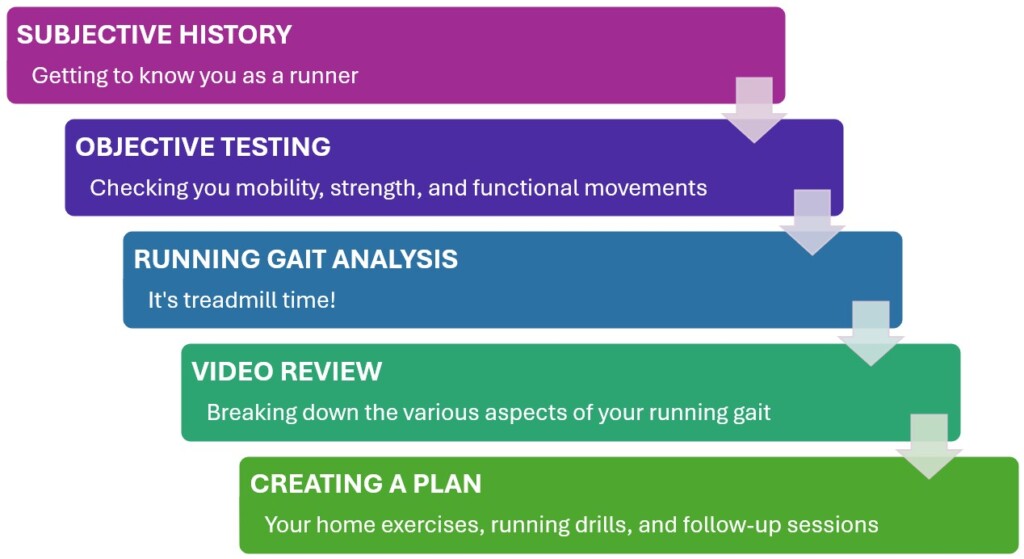Run well, run fast, run injury free.
What is Running Gait?
If you’ve ever done any amount of running, or spent time around somebody who is a runner, chances are you may have heard the term “running gait”. So, what is it? The word gait is a term used to describe the way in which somebody walks, including the movement of their legs, arms, and their trunk. Running Gait is the way that somebody moves their legs, trunk, and arms when they run. And just like many things in life, this can get analyzed, hence the term “running gait analysis“.
Why Should You Get a Running Gait Analysis?
We come in all shapes and sizes, and because of our individual differences, we each have our own preferred running technique. If you’re an experienced runner, you may have a pretty good idea of what your running gait looks like. Or maybe you haven’t given it much thought (which is ok!).
A running gait analysis (RGA) is used to break down your running form into parts to identify things you’re doing well, and areas where you could become more efficient. RGA is a powerful tool to help runners and health professionals manage, and potentially reduce, the risk of common running-related injuries such as knee pain, shin splints, achilles tendinopathy, and IT Band issues.
It doesn’t matter if you’re a new runner who is working towards your first 5K, an experienced marathoner, or you’re just looking to rehab an injury, we can help you reach your goal!
What is Involved in a Running Gait Analysis?

It begins similar to a standard physiotherapy appointment – our physiotherapist, Roman Zaliskyy, will begin by asking targeted questions about your running experience, prior and/or current injuries, and your short and long-term goals!
After taking your history, we’ll move on to our objective exam by testing some functional movements (such as squat, lunge, hopping) and performing some strength tests.
Then we get to the exciting part of the assessment – you hopping on the treadmill to run! Once you find a comfortable pace, we’ll record a video of you running (with your consent, of course) from various angles so we can see your movements in slow motion. We’ll review the video together and analyze your running technique and biomechanics, looking at things such as foot strike, foot supination / pronation, stride length, cadence (steps per minute), and potential asymmetries.
The final portion of the assessment includes forming a plan based on your running goals. We’ll provide you with a home exercise program, running drills, and cues to help optimize your running, discuss the need for new or different running shoes (if necessary), and plan future sessions where we can review and monitor your progress over the coming weeks and months.
What You Should Bring
The most important things to bring are comfortable clothes (ideally shorts) and your running shoes! If you have several pairs of shoes that you rotate through, you’re welcome to bring them along for us to look at.
Additionally, if you use a smartwatch (Apple Watch, Garmin, FitBit, etc) to record your activities, please bring it to your appointment. While it’s not going to be the most important part of the running assessment, some of the data, such as your average cadence and stride length, can help us be more objective in tracking your progress.


